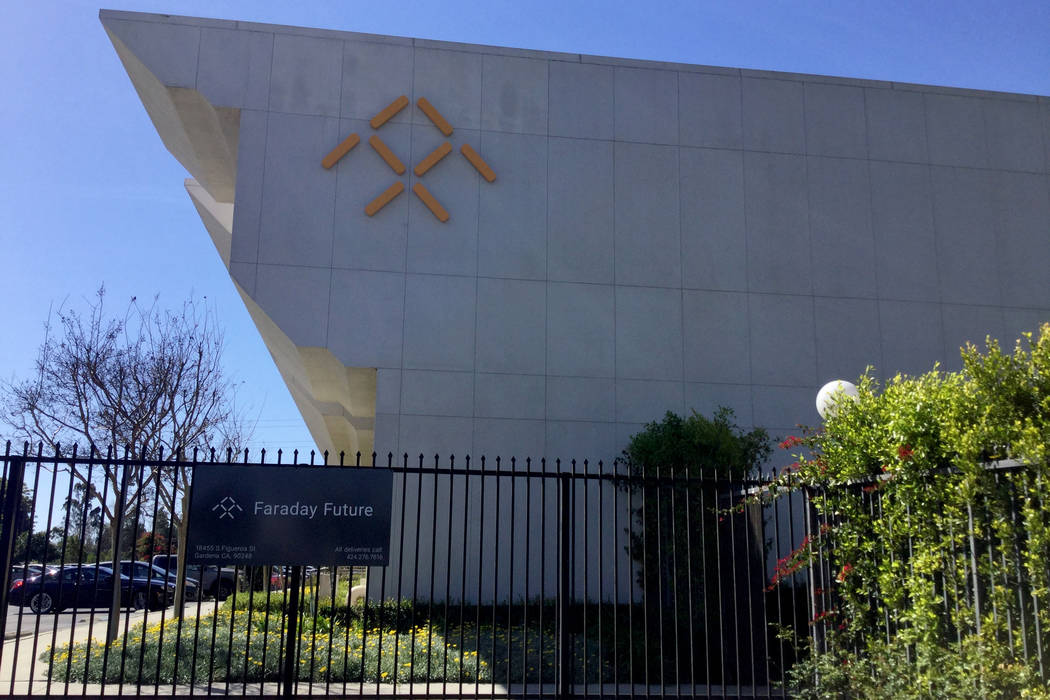Faraday Future repays Nevada, others interested in Apex site
Faraday Future and Nevada have officially broken up.
“The Faraday project is basically dissolved at this point at absolutely no cost to the state or local governments,” Steve Hill, director of the Governor’s Office of Economic Development, said Tuesday. “Over the past month we worked with Faraday Future to identify any abatements they received but did not remit.”
Faraday Future made out a $16,000 check to the state’s Department of Taxation in July, paying back the only abatements the company received.
Approximately $620,000 remains in a trust fund that will begin to be distributed around the state to local tax jurisdictions.
“There are some formalities that have to take place but it is essentially in process,” said Brian Baluta, spokesman for the economic development office.
Faraday still owns 930 acres of land at Apex. Hill said “several companies” have an interest in the site and “one in particular” is working with Faraday.
“It’s between that company and Faraday to hopefully allow that property at Apex to move forward,” Hill said, declining to elaborate on any details about the interested companies, including which industries they represent.
Nevada lawmakers approved a $335 million incentive package, including $215 million in tax breaks for electric autonomous vehicle manufacturer Faraday Future in December 2015 to produce vehicles at Apex Industrial Park in North Las Vegas in 2018.
Faraday confirmed in August that the company pulled out of its deal and signed a lease on a 1-million-square-foot manufacturing facility in Hanford, California, between Los Angeles and Silicon Valley.
Hill said he’s confident that “something pretty significant will move forward in the very near future” and the he’s “excited about a potential project that is there.”
Contact Nicole Raz at nraz@reviewjournal.com or 702-380-4512. Follow @JournalistNikki on Twitter.
Timeline
February 2015: Mayor John Lee makes a phone call to Faraday Future, setting up a two-hour meeting with executives at the company's Los Angeles-area headquarters.
December 2015: Nevada lawmakers approve $335-million incentive package, including $215 million in tax breaks for Faraday Future.
April 2016: Faraday breaks ground on its 3 million-square-foot manufacturing facility at Apex. Executives set a goal to start building cars as early as 2017.
June 2016: Faraday Future begins leasing office space from North Las Vegas City Hall.
October 2016: The general contractor for the construction work at Apex, AECOM, warns Faraday on unpaid $21 million deposit that had been due in September.
November 2016: AECOM completes all site demolition work as well as graded and moved over 2.5 million cubic yards of dirt. AECOM stopped further construction work on site after Faraday missed multiple deadlines for depositing money into an escrow account to pay builders.
December 2016: Faraday Future sets a new goal to produce cars in 2018.
January 2017: Faraday Future presents a prototype of its flagship vehicle, the FF 91, at CES.
February 2017: Faraday announces plans to build an additional 650,000 square-foot facility on site to be able to "put the first batch of orders into production" in 2018.
May 2017: Jia Yueting, CEO of Chinese tech giant LeEco and the main financier of Faraday Future, steps down as CEO of Leshi Internet Information & Technology Corp, but remains as chairman.
July 2017: Faraday Future hires Ulrich Kranz, former senior vice president of BMW and head of the company's electric vehicle project.
August 2017: Faraday Future gave a 30-day notice to move out of offices leased inside North Las Vegas City Hall.






















